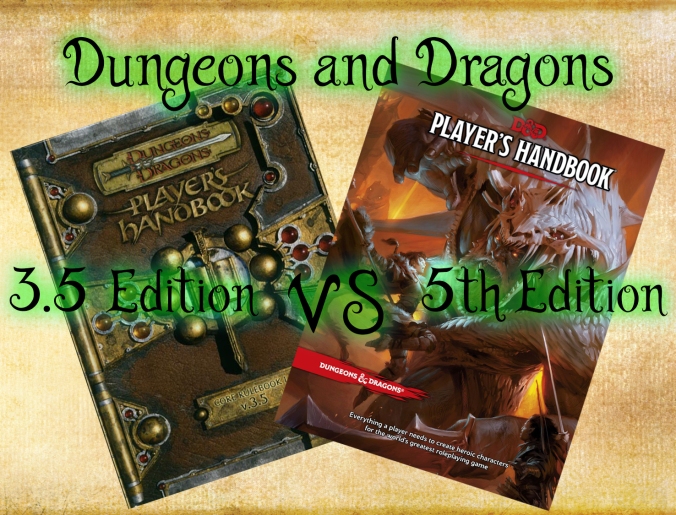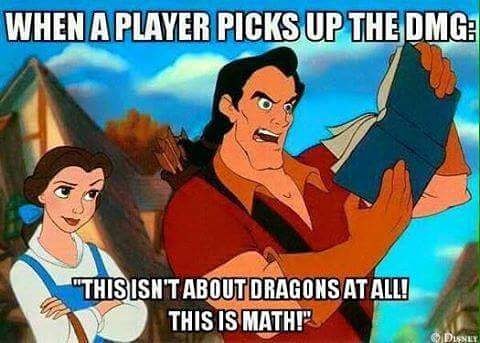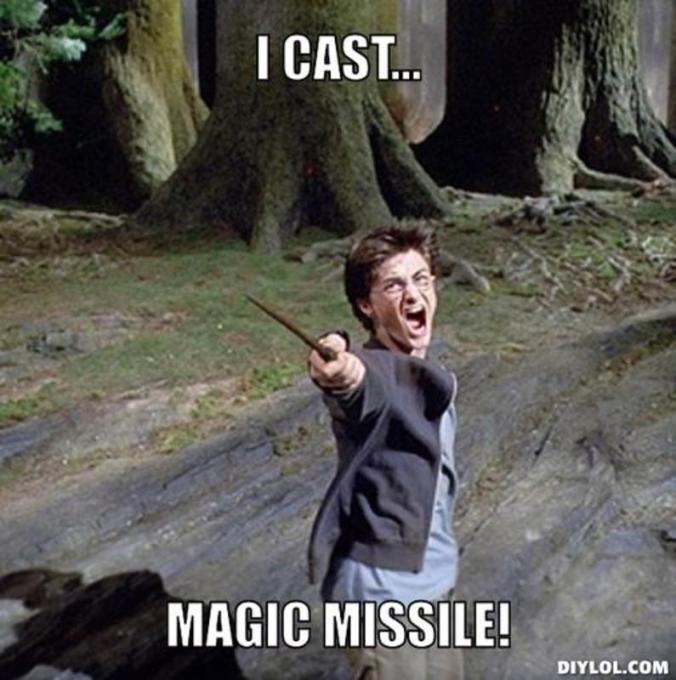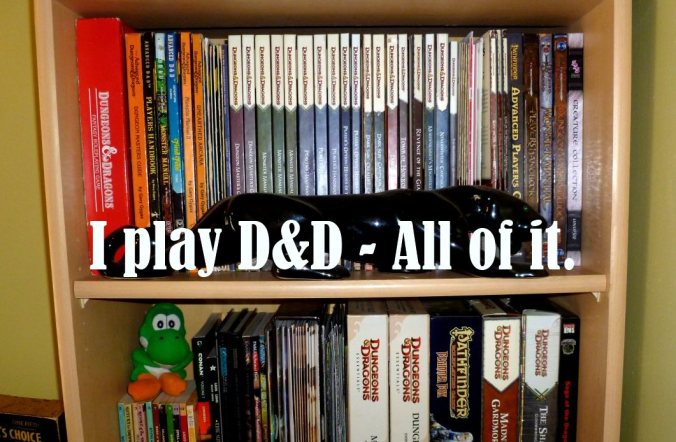I’ve mentioned in previous posts such as D&D for Dummies that there are many different versions of Dungeons and Dragons. While they all are basically the same game, each is slightly different from the generation before it. The most popular, I’ve found, of the D&D editions is 3.5 as it was the last “good” edition as far as many people are concerned. 4th edition left a bad taste in the mouth of many players due to focusing more on combat than storytelling, which only leaves 5th edition, the new kid on the block. How does this newest edition compare to the oldy-but-a-goody 3.5?

D&D is known as a very detailed and admittedly complicated game. Whether it be sword-fighting or chatting with a king, there are a LOT of stats that go into every roll and action a PC can take. This is one of the most major ways 3.5 and 5th differ in my opinion. 3.5 has thirty-five different skills which PCs could put points into in order to become better at said skill such as opening locks or spotting hidden enemies (Player’s Handbook: 3.5 Core Rules). It also gives PCs six abilities: Wisdom, Charisma, Strength, Dexterity, Intelligence, and Constitution (as well as a Reflex, Fortitude, and Willpower for saving throws) which add further bonuses or penalties to a PC’s roll. On top of that, each class and/or race might get different penalties or bonuses that could further influence the outcome of their course of action.
What I’m getting at here is that 3.5 had a lot more source material and expansion books, therefore it had a lot more numbers and rules to keep track of. While this had the advantage of allowing a PC to be whatever they want and be good at whatever they want, the surplus of information could be overwhelming to newbies, as I can say from personal experience. “3.5 is great for people who really love the number crunching and mechanical aspects of character building. There are a lot of options and you can pretty much always find a way to build whatever character you want. [But] It can be difficult to keep track of that much content and granular rules… It is a mountain of material that, while opening up vast opportunities for those that know all of it and where to find it, can be extremely daunting for those trying to jump in,” (Pros & Cons to D&D 3.5, 4e and 5).

Source: shaneplays.com
5th edition on the other hand is “Simplicity, Simplicity, simplicity,” (Pros & Cons to D&D 3.5, 4e and 5). Many of the rules in 3.5 were condensed or simplified in 5th which made it much easier to just pick up and play, especially if you’re green to D&D in general. The original thirty-five skills were condensed to eighteen (the six abilities stayed the same), and instead of adding a bunch of negative or positive modifiers to skills, a PC was proficient (add +1 up to +5 to roll) with a skill or not (Player’s Handbook: 5th edition). 5th brought in the advantage/disadvantage system. If a PC had advantage, they rolled their d20 twice and took the higher of the two rolls, and conversely, at disadvantage, they took the lower (3.5e to 5e). This helped to speed up game play, particularly in larger groups. With simplified stats and proficiencies, PCs could get at best a +11 to a roll, instead of a +20 (if they played their cards right) as they might in 3.5 edition. Some resented this as being too restricting while I feel it balances PCs across the board better.
In the same vain of simplicity, 5th brought in resistance and vulnerability. While in 3.5 a PC might take a +5 or -5 to damage of a certain type (plus other modifiers), a PC takes a flat half damage with resistance or twice the damage with vulnerability (Nerd Immersion). Weapons, taking rests, and other mechanics that were determined by numbers or more complex rules in 3.5 were condensed down into a “type 1 or type 2” sort of style.

Source: serpent77.com
D&D, being a fantasy RPG, also has a lot of lore and importance in magic. This is the one other area where 3.5 and 5th edition differentiate greatly. There are a lot of expansion books in 3.5 that go into different magic circles and orders, but to simplify, spell casters in 3.5 were complicated but widely powerful classes. They couldn’t wear armor as it interfered with their spells (inflicting one of those many penalties I mentioned earlier), their cantrips or “free” spells were useless in combat, and there was a LOT more spells that a PC could choose from which ranged from quirky but useful to ridiculous and completely over powered (Nerd Immersion).
In contrast, 5th edition spell casters were more balanced. Armor no longer got in the way of their magic, letting them wear armor if they had a proficiency in it. Their cantrips could actually do damage and scale in power well enough to remain useful in combat. The spell list was condensed a bit overall, and the different magic wielding classes could no longer know as many spells as they once could in 3.5. In general, using magic was “much less mathy…mostly fixed numbers instead of per-level calculations”(Pros & Cons to D&D 3.5, 4e and 5). These changes were met with mixed reviews as some veterans disliked what they felt were more limited options for spells.
As you can see, there are a lot of difference just between these two editions of the same game! Yet, both 3.5 and 5th edition D&D remain ever popular and heavily played. Every tabletop RPG has its pros and cons, so if you want to dive into this world, go look into what sort of game might be the best for how you like to play!

Source: panzerleader.com